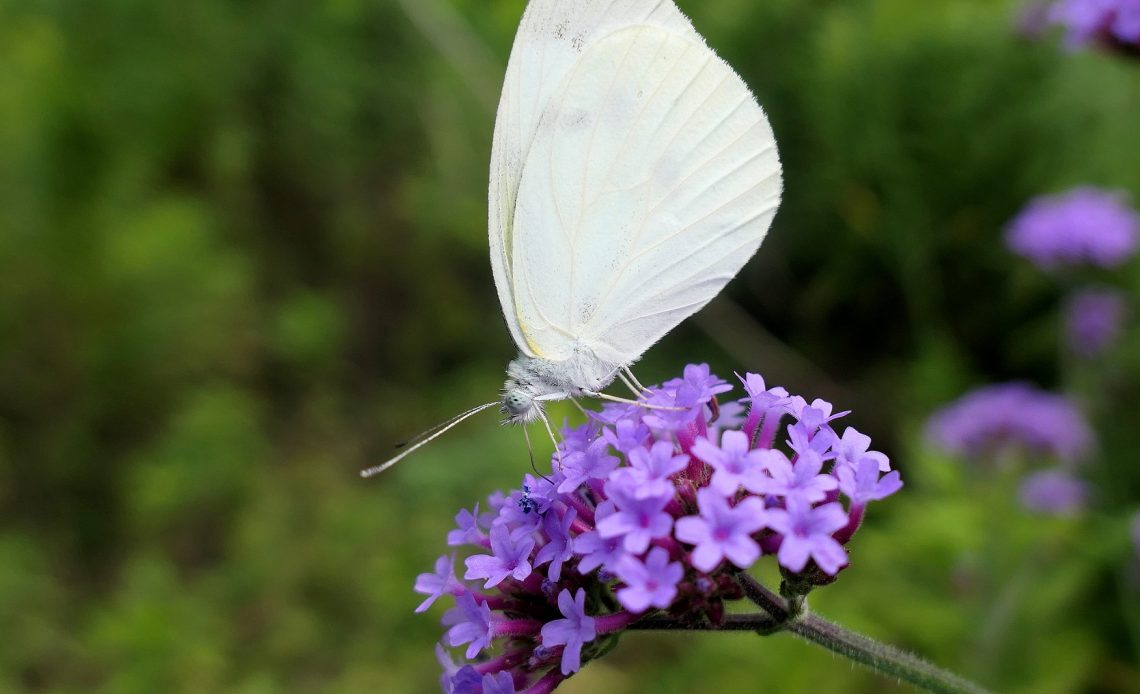

We’re here to help! Wild Yards is a completely free website that is 100% dedicated to helping you create a wildlife-friendly, sustainable yard. Read more
WildYards is reader-supported. When you buy a product through a link on our site, we may earn a comission. Every product is independently selected by our (obsessive) editors and our reviews are unbiased and objective. Read more about our mission or our privacy policy.
If you’ve ever planted herbs, you’ve no doubt noticed what charming, colorful, fragrant flowers they have, and you’re not the only one. Honey bees, bumblebees, and hummingbirds, all delight in flowering herbs. But what about butterflies? Do butterflies like verbena?
Butterflies love verbena, and all different species of this common herb are known to attract multiple species of butterflies. With multiple native species, many of which can be used for medicinal and culinary purposes, verbena is one of the simplest, most versatile plants you can add to your butterfly garden.
Why does verbena attract butterflies?
Butterflies love verbena for their fragrant, nectar-filled purple-blue flowers. There are multiple species of verbena, all of which have dense spikes of small, fragrant blue flowers (though in some cultivated variants the flowers are white, pink, or purple). Verbena flowers are incredibly rich in nectar and thus hugely attractive to butterflies and many other pollinators. Many beekeepers even use verbena as a honey plant and plant the herb as food for the honey bees.
Many species of verbena, including blue vervain/swamp verbena (Verbena hastata), western vervain (Verbena lasiostachys), and narrowleaf vervain (Verbena simplex), grow wild in the United States and are even considered a weed. But the most common garden varieties you will find are purpletop vervain (Verbena bonariensis) and common verbena (Verbena officinalis). Both these species of verbena are known for being among the best flowers to plant for butterflies and honey bees.
Some species of verbena, such as the hoary verbena (Verbena stricta), not only feed adult butterflies but are also hosts for their caterpillars. So verbena can feed and support butterflies in all stages of their lives!
What butterflies are attracted to verbena?
The great news is that myriad species of butterfly have been spotted visiting verbena flowers. Listing the number of species across the globe would make for a very long article. But some of the most common American species known to visit verbena include:
The eastern comma, also called the hop merchant or anglewing, is a bright orange, spotted butterfly with a distinctive ragged shape to its wings. Commas are also particularly fond of fruit, so leave some bananas or oranges out to attract these butterflies.
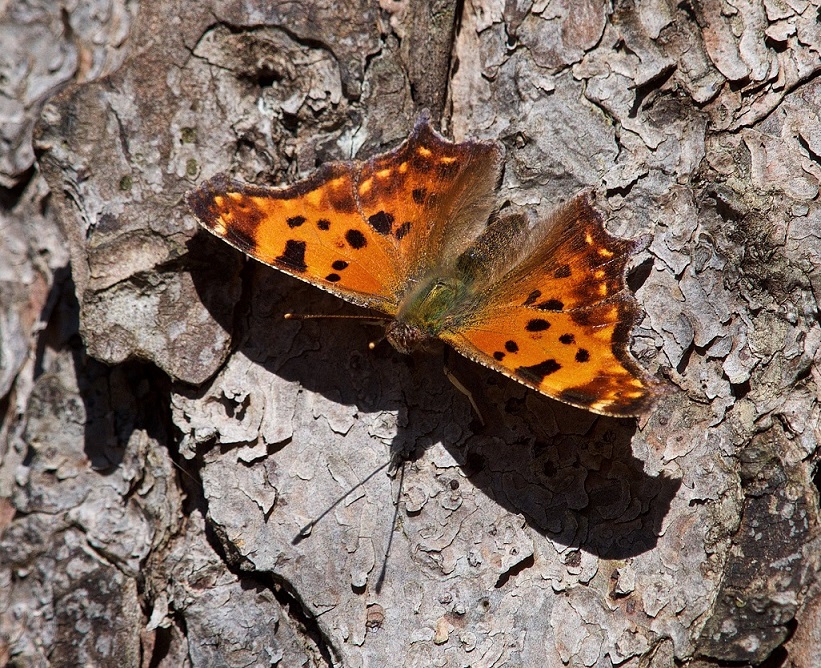
The gray hairstreak is a slightly mousy-looking gray butterfly with brilliant orange eyespots. The larvae of these caterpillars feed mostly on clover, so plant some clover alongside your verbena to encourage them to breed in your area.
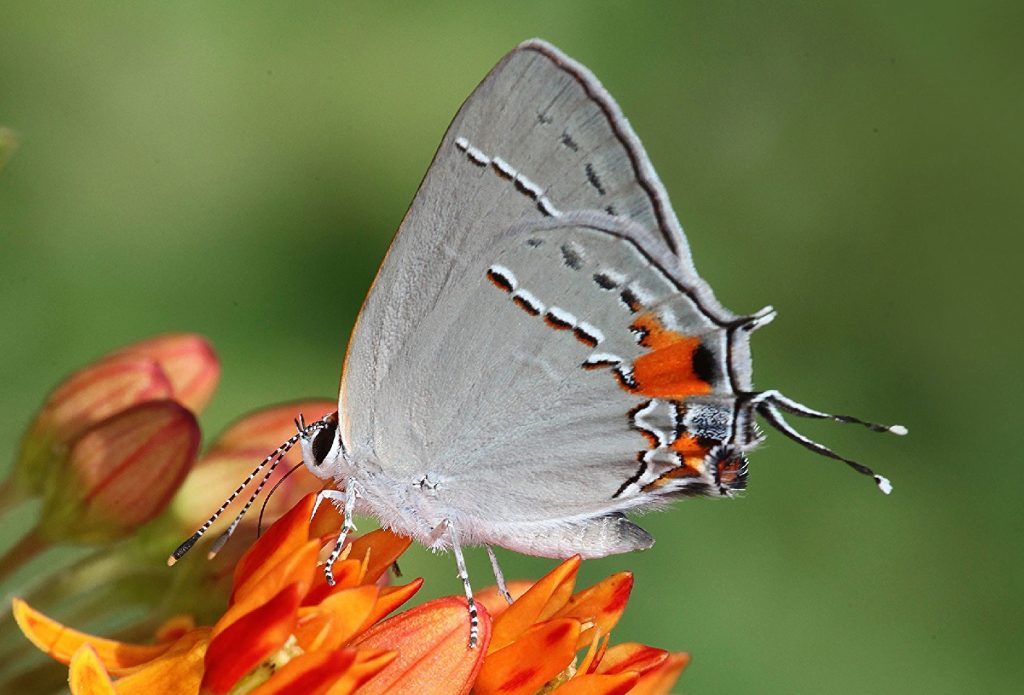
Eastern and western swallowtails are large, magnificent, yellow butterflies with dramatic black stripes. Male swallowtails will often “puddle”, or drink from shallow mud puddles to take in minerals. If there are swallowtails in your area, you can create a “puddle” for the males by laying out a shallow dish of wet sand or compost.
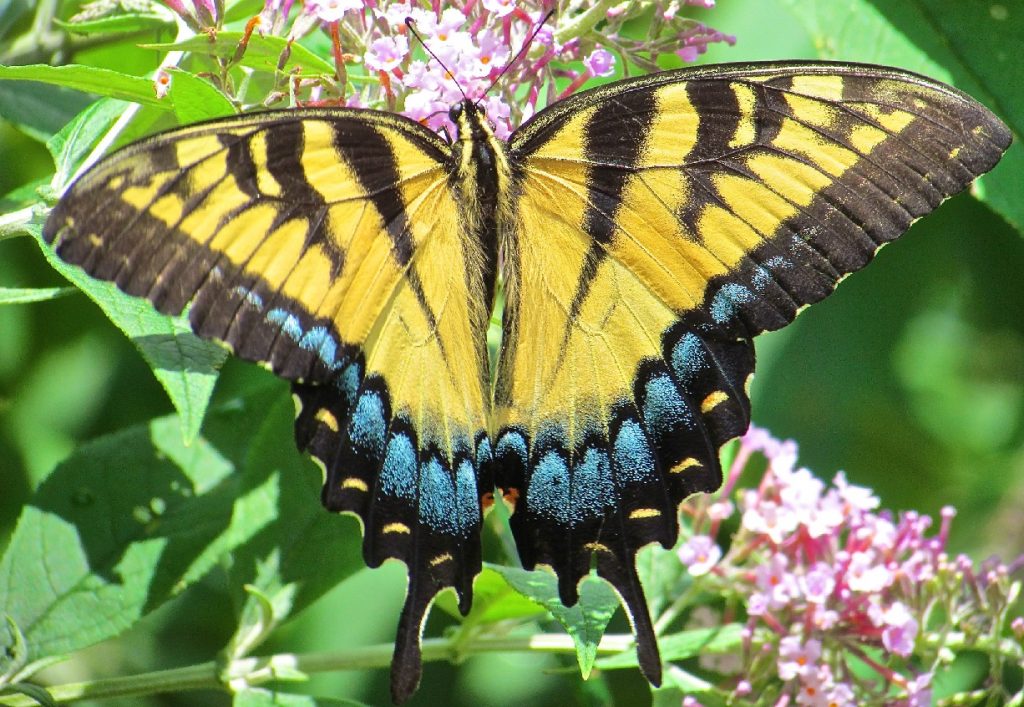
Variegated fritillaries are small, orange-brown butterflies with stunning black patterns. These butterflies use passionflowers, flax, and violets as host plants for their larva, which are also wonderful flowers to add to your butterfly garden.
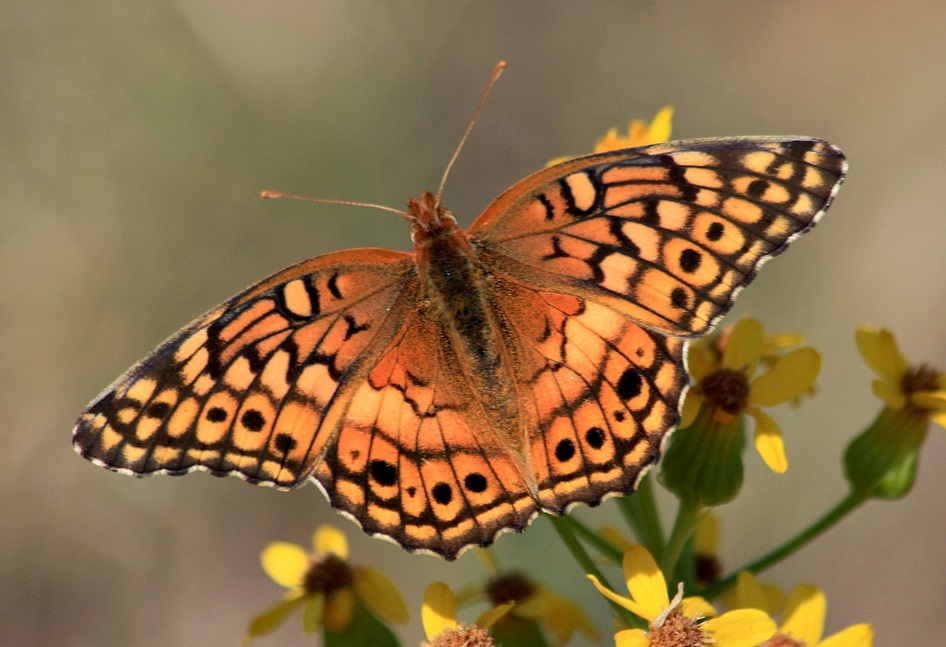
Common buckeyes are stunning butterflies with multiple huge, hypnotic eyespots, and it loves verbena. Not only do the adult butterflies love verbena flowers, but native verbena species like the hoary verbena and the blue vervain are perfect host plants for common buckeye caterpillars. These verbena species are planted in many American butterfly gardens for just this reason.
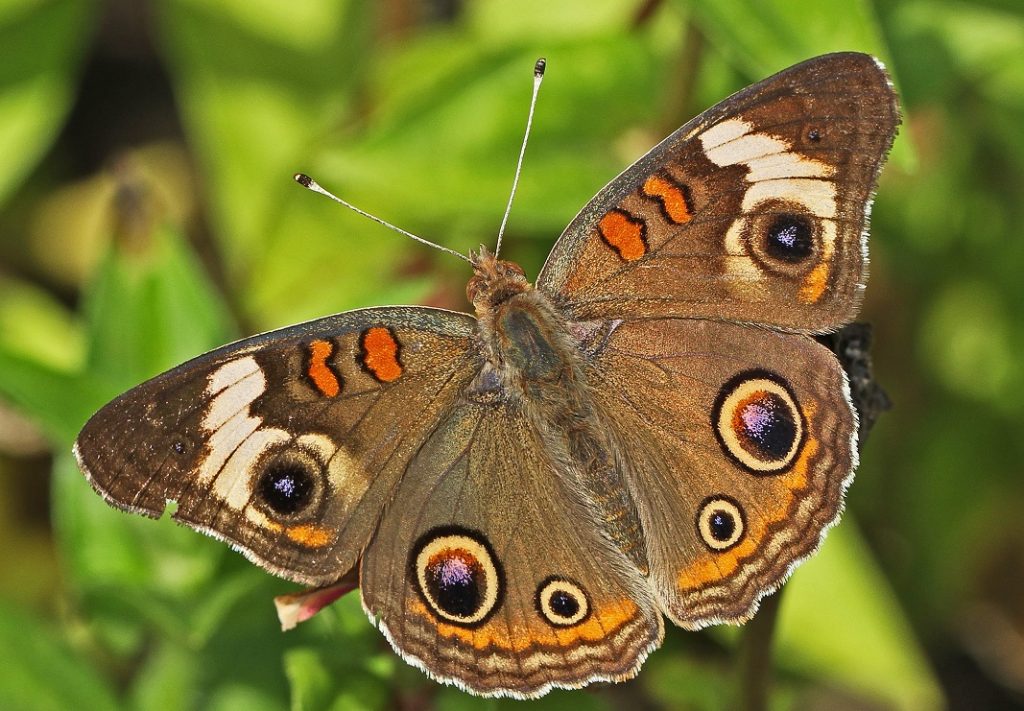
American painted ladies, or American ladies, are beautiful orange butterflies with large eyespots on the underside of their wings.
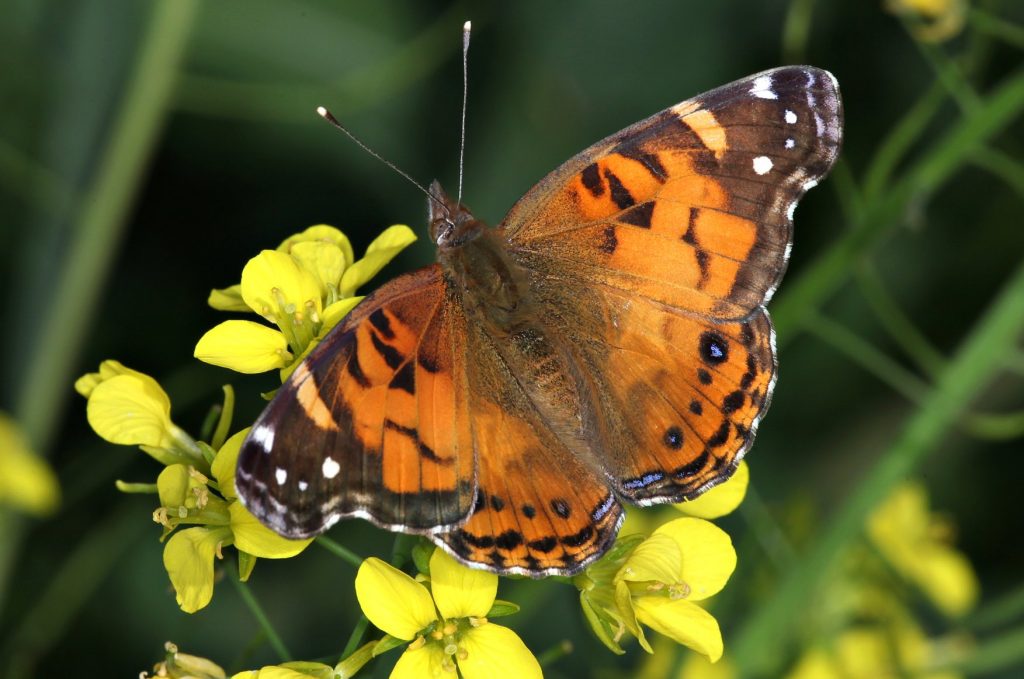
Zebra longwings are odd-looking butterflies with long, black-and-white wings. These exotic visitors are most common in South and Central America but have been spotted in Texas, Florida, and even more northern states in the hot summer months. They’re known for their odd nighttime habit of roosting in large groups of sixty or more. The larvae of the zebra longwing feed on passionflower, so if you’re in southern Texas or Florida planting verbena and passionflower might get you some breeding zebra longwings as well as variegated fritillaries.
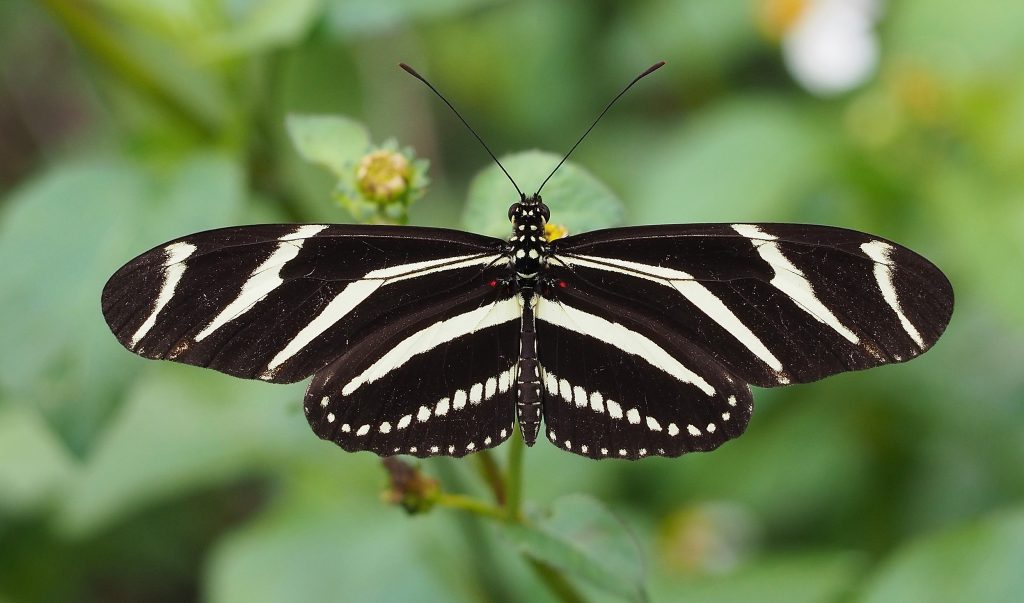
Do monarchs like verbena?
Yes! Even the magnificent and endangered monarch butterflies love verbena flowers! If you want to encourage monarchs in particular, try planting native verbenas alongside some milkweeds. Gravid females will come to feed on the verbenas and lay their eggs on the milkweeds. The verbenas in turn will then provide food to freshly hatched adults when they emerge from their cocoons. And don’t worry if you see a freshly-hatched monarch covered in red liquid; butterflies do not bleed when they hatch.
Many of the previously mentioned species, including the variegated fritillary and the eastern comma, will visit milkweed flowers for their nectar. So planting milkweed with your verbena will encourage multiple species of butterfly to visit your wild yard.
Depending on your location, adding verbena to your wild yard might bring some of these species, among many others, to your garden! And other pollinators love verbena too; you might very well see hummingbirds alongside the butterflies visiting your verbena flowers.
I’m convinced! How do you grow verbena?
On top of everything else, verbena is quite easy to grow. The most common garden varieties are common verbena (Verbena officinalis) and purpletop vervain (Verbena bonariensis), and they can be easily purchased at most nurseries.
You can purchase and add mature plants to your garden, but verbena is also easily grown from seed. New seedlings are quite sensitive to cold, however, so if you’re in a colder area it’s best to start them inside and harden them slowly.
Verbena plants like well-drained soil and will tolerate drought conditions. Common verbena, in particular, prefers limey, or alkaline, soils. They like full sun to partial shade, self-seed easily, and will bloom from late spring through to the fall. Verbena is generally disease resistant but can be prone to fungal infections.
The hardiness of verbena is dependent on species, but it is typically suitable for ranges between 9 and 11 according to the USDA Hardiness Zone Map. The good news is that, no matter your zone, there is likely a verbena right for you!
Some of the common garden varieties are becoming invasive in some areas of the United States, so native species like rose vervain (Verbena canadensis), hoary verbena, or blue vervain might be a better choice for your butterfly garden. There are species of verbena that are native to most parts of the US, so have a look and see which species might be best for your wild yard.
Is it worth growing verbena for butterflies?
If you’re looking for a plant to attract butterflies, you really can’t go wrong with a verbena. Whether you go with a garden variety, the culinary types, or a native species, they’ll all be a happy addition and bring the butterflies flocking.
